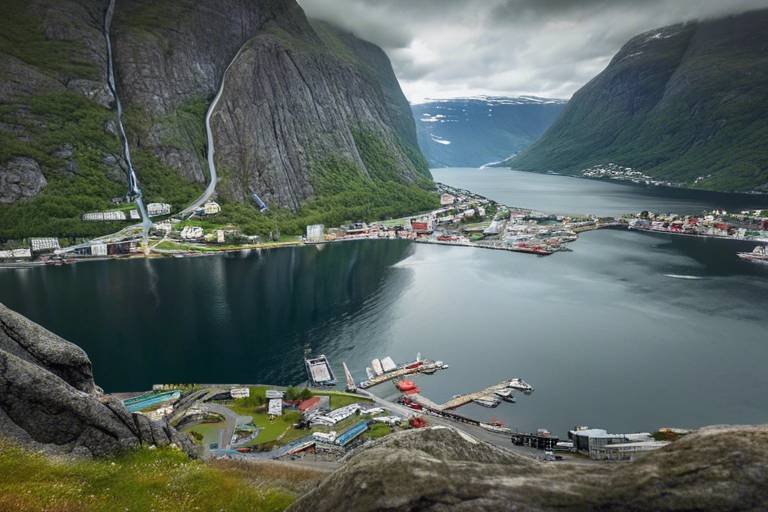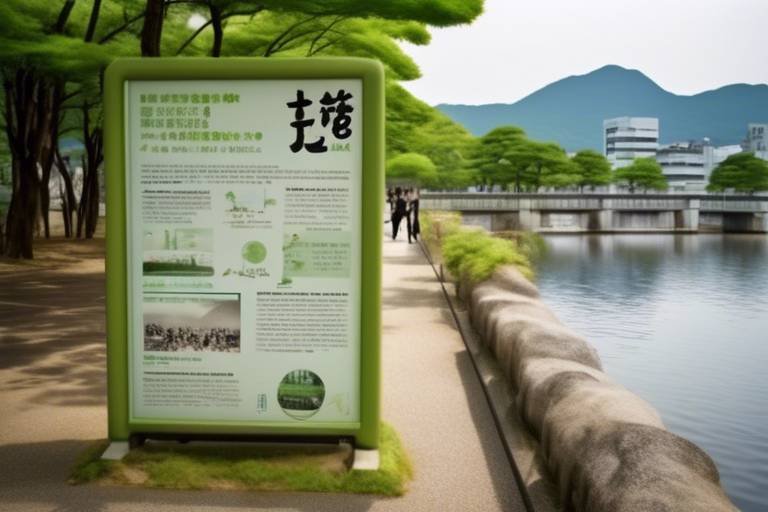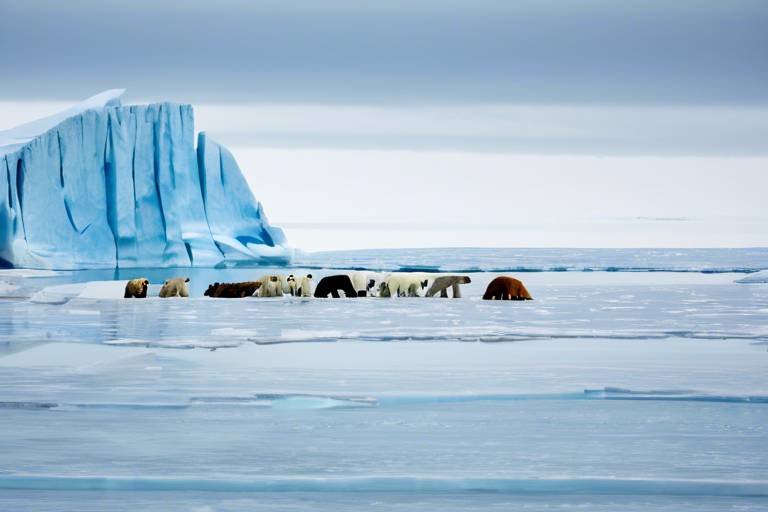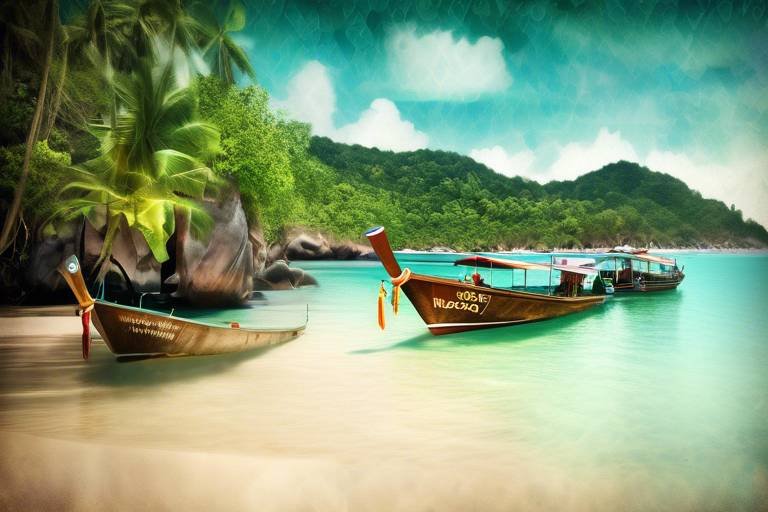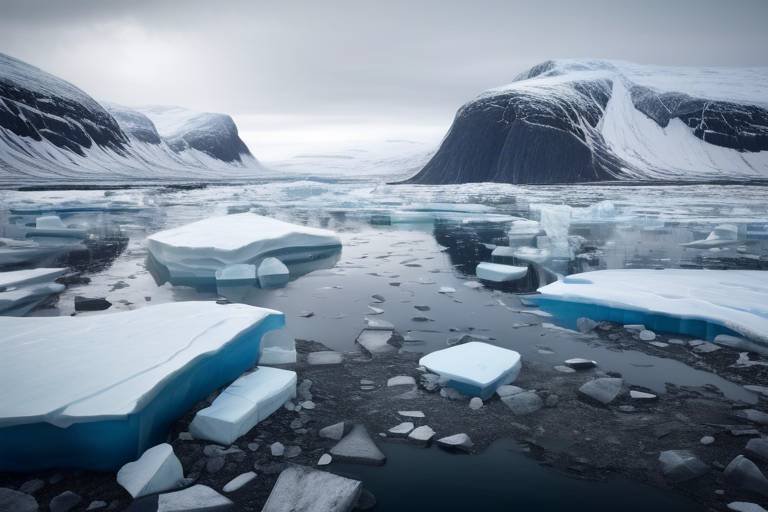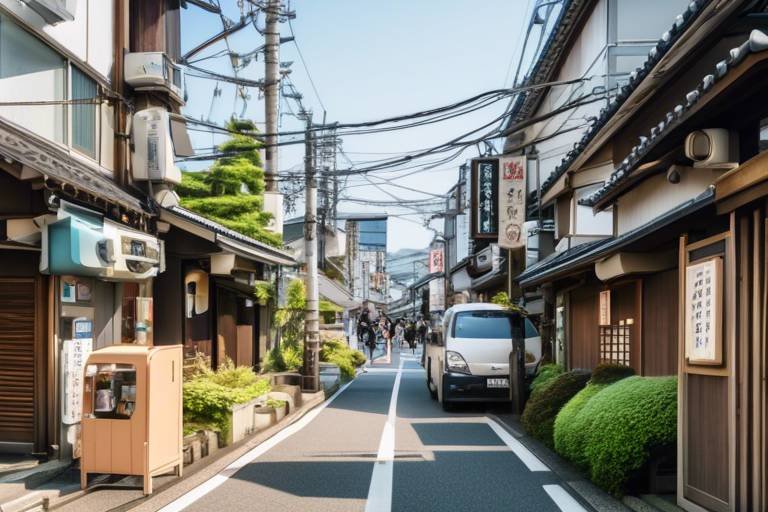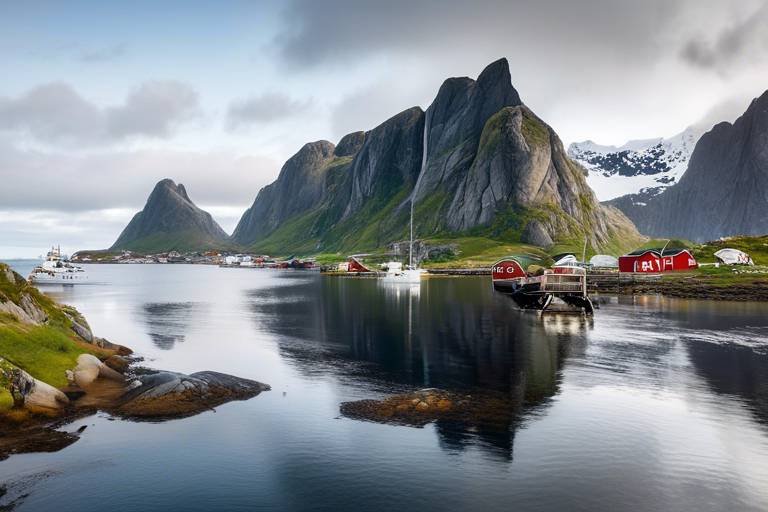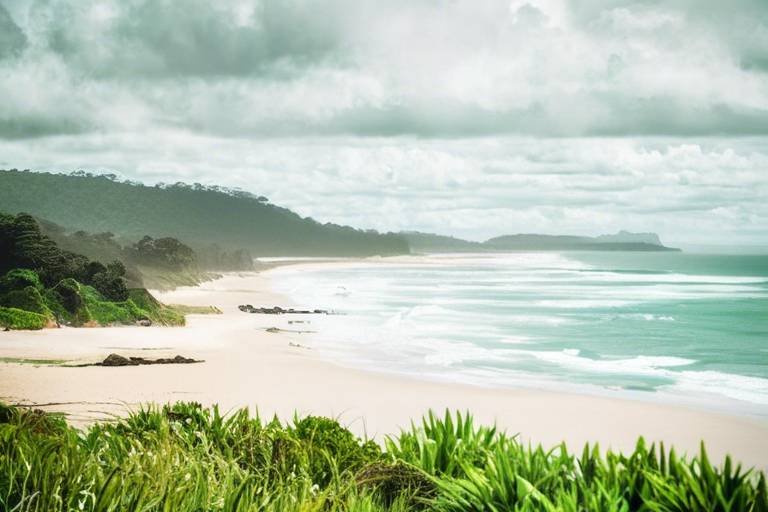How to Minimize Your Impact While Visiting Norway’s Fjords
When venturing into the breathtaking fjords of Norway, it's crucial to minimize your impact on the delicate ecosystem to ensure its preservation for generations to come. By adopting sustainable practices and making conscious choices, visitors can play a significant role in protecting the natural beauty of this unique environment.
One of the first steps in reducing your impact while exploring Norway's fjords is understanding the fragility of the ecosystem. These majestic waterways are home to a diverse array of flora and fauna, and any disruption can have lasting consequences. By being mindful of your actions and respecting the environment, you can help maintain the delicate balance that sustains life in this region.
Choosing eco-friendly transportation options is another essential aspect of responsible travel. Opting for electric cars, public transport, or cycling not only minimizes your carbon footprint but also allows you to immerse yourself in the stunning scenery without contributing to pollution. By selecting sustainable modes of transportation, you can enjoy the beauty of the fjords while preserving it for future visitors.
Respecting the wildlife and marine life that call the fjords home is paramount. Observing animals from a safe distance, refraining from feeding them, and minimizing noise pollution are crucial for their well-being and the preservation of their natural habitat. By following guidelines and showing respect for the local fauna, you can help protect these species and their environment.
Supporting local conservation efforts is a meaningful way to give back to the community and contribute to the preservation of the fjords. Whether through volunteering, donating to organizations, or purchasing sustainably sourced products, visitors can actively participate in initiatives that aim to safeguard the region's natural resources. By engaging with conservation projects, you can make a positive impact on the environment and support the local economy.
Reducing single-use plastics is a simple yet effective way to minimize waste during your visit to the fjords. Carrying reusable water bottles, bags, and utensils not only reduces your environmental footprint but also sets a sustainable example for others. By being conscious of your plastic consumption and opting for reusable alternatives, you can help keep the fjords pristine and free of unnecessary pollution.
Practicing Leave No Trace principles is essential for preserving the natural beauty of Norway's fjords. Educating yourself and fellow travelers on proper waste disposal, respecting designated trails, and camping areas ensures that the environment remains unspoiled for future visitors. By leaving no trace and treading lightly on the land, you can enjoy the fjords responsibly while protecting their integrity.
Engaging in cultural exchange with respect and sensitivity is key to fostering positive interactions with local communities. By honoring traditions, customs, and values, visitors can create meaningful connections and gain a deeper appreciation for the rich cultural heritage of the region. Whether participating in local activities or engaging with residents, approaching cultural exchange with an open mind and a spirit of curiosity enhances the travel experience for both visitors and locals.
Spreading awareness and education about sustainable tourism practices is crucial for promoting responsible travel in Norway's fjords. By sharing knowledge, experiences, and tips with fellow travelers, you can inspire others to adopt eco-friendly behaviors and contribute to the conservation of this pristine environment. Encouraging a culture of sustainability and environmental stewardship among visitors helps create a positive impact and ensures the long-term preservation of the fjords for future generations.

Understanding the Fragile Ecosystem
Exploring sustainable practices for visitors to Norway's stunning fjords to help preserve the natural beauty and ecosystem for future generations.
When delving into the breathtaking world of Norway's fjords, it's crucial to grasp the delicate balance of the ecosystem that thrives within these majestic landscapes. The fjords are not just picturesque backdrops; they are intricate ecosystems teeming with diverse flora and fauna that rely on undisturbed habitats to flourish. By understanding the fragility of this ecosystem, visitors can appreciate the importance of responsible tourism practices in safeguarding these natural wonders for generations to come.

Choosing Eco-Friendly Transportation
Exploring sustainable practices for visitors to Norway's stunning fjords to help preserve the natural beauty and ecosystem for future generations.
Insights into the unique ecosystem of Norway's fjords and the importance of protecting it through responsible tourism practices.
When it comes to exploring the majestic fjords of Norway, choosing eco-friendly transportation is key to reducing your carbon footprint and minimizing environmental impact. Opting for electric cars, public transport, or cycling not only allows you to immerse yourself in the breathtaking scenery but also contributes to the preservation of the pristine environment. By selecting sustainable transportation options, you can enjoy a guilt-free journey while safeguarding the natural beauty of the fjords for generations to come.
Guidelines on observing wildlife from a safe distance, avoiding feeding animals, and minimizing noise pollution to protect the natural habitat.
Ways to contribute to local conservation projects, such as volunteering, donating to organizations, or purchasing sustainably sourced products.
Strategies for minimizing plastic waste by carrying reusable water bottles, bags, and utensils while visiting the fjords.
Educating visitors on the importance of leaving no trace, including proper waste disposal and respecting designated trails and camping areas.
Encouraging cultural sensitivity and respect for local traditions when interacting with residents and participating in cultural activities.
Promoting awareness about sustainable tourism practices among fellow travelers and encouraging others to follow eco-friendly guidelines in Norway's fjords.

Respecting Wildlife and Marine Life
When visiting Norway's majestic fjords, it's crucial to respect the wildlife and marine life that call these pristine waters home. By following simple guidelines and understanding the impact of our actions, we can ensure the preservation of these delicate ecosystems for generations to come.
One of the key principles to remember is to observe wildlife from a safe distance. While it may be tempting to get closer for a better view or a perfect photo, it's essential to prioritize the well-being of the animals. Getting too close can disrupt their natural behavior and cause unnecessary stress.
Avoiding feeding the wildlife is also crucial. While it may seem like a harmless gesture, feeding animals can disrupt their natural diet and behavior, leading to potential health issues. It's best to let them forage and hunt for food on their own to maintain their natural instincts.
Additionally, minimizing noise pollution is essential for the tranquility of the marine environment. Loud noises can disturb marine life, affecting their communication, navigation, and overall well-being. Keeping noise levels to a minimum, especially near sensitive areas, can help protect the natural habitat.
By following these simple guidelines and showing respect for the wildlife and marine life in Norway's fjords, visitors can contribute to the conservation efforts and ensure the sustainability of these precious ecosystems.
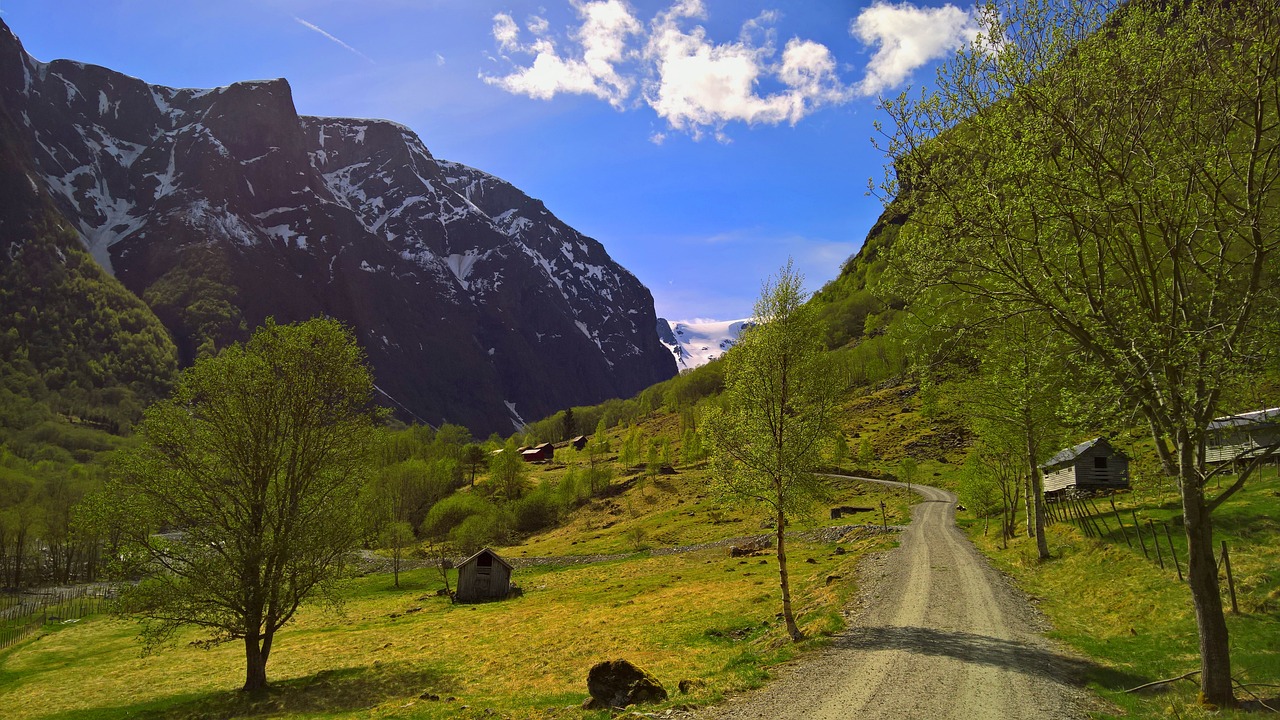
Supporting Local Conservation Efforts
When visiting Norway's majestic fjords, it's essential to not only admire the natural beauty but also to actively support local conservation efforts to ensure the preservation of this unique ecosystem for future generations. By engaging in various initiatives and practices, visitors can contribute to the sustainability and protection of the fjords, making a positive impact on the environment and local communities.
One way to support local conservation efforts is by participating in volunteer programs organized by environmental organizations or national parks. These programs often involve activities such as trail maintenance, habitat restoration, or wildlife monitoring, allowing visitors to directly contribute to the conservation of the fjords' natural resources.
Additionally, donating to local conservation organizations or initiatives can also make a significant difference. By supporting these groups financially, visitors can help fund crucial conservation projects, research efforts, and educational programs aimed at preserving the fjords' delicate ecosystem.
Another way to support local conservation is by choosing to purchase products that are sustainably sourced and produced within the region. By buying locally made goods, visitors can support the local economy and reduce the environmental impact of transportation and production processes.
Furthermore, engaging in responsible tourism practices, such as staying in eco-friendly accommodations or participating in guided tours led by certified eco-tour operators, can also contribute to local conservation efforts. These initiatives prioritize sustainability, minimize environmental impact, and support the protection of the natural environment.
Overall, by actively participating in and supporting local conservation efforts, visitors can play a vital role in safeguarding the fragile ecosystem of Norway's fjords, ensuring that this breathtaking natural wonder remains pristine and untouched for generations to come.

Reducing Single-Use Plastics
When it comes to visiting Norway's majestic fjords, reducing single-use plastics is a crucial step towards preserving the pristine environment. By minimizing plastic waste, travelers can significantly decrease their ecological footprint and contribute to the long-term sustainability of this natural wonder.
One effective strategy to reduce single-use plastics is to carry reusable items such as water bottles, bags, and utensils during your exploration of the fjords. By opting for durable, eco-friendly alternatives, you can avoid contributing to the accumulation of plastic waste that harms the delicate ecosystem of the fjords.
Moreover, being mindful of your consumption habits and actively seeking out establishments that offer plastic-free options can make a substantial difference. Supporting businesses that prioritize sustainability and offer alternatives to single-use plastics sends a powerful message about the importance of environmental conservation.
Additionally, participating in beach clean-up initiatives or organized plastic waste collection activities can have a direct impact on reducing the amount of plastic pollution in and around the fjords. By taking part in these efforts, visitors can actively contribute to the cleanliness and preservation of the natural surroundings.
By making conscious choices to minimize single-use plastics during your visit to Norway's fjords, you not only help protect the environment but also set a positive example for others to follow. Together, small actions can lead to significant changes in promoting a more sustainable and eco-friendly approach to tourism in this breathtaking region.
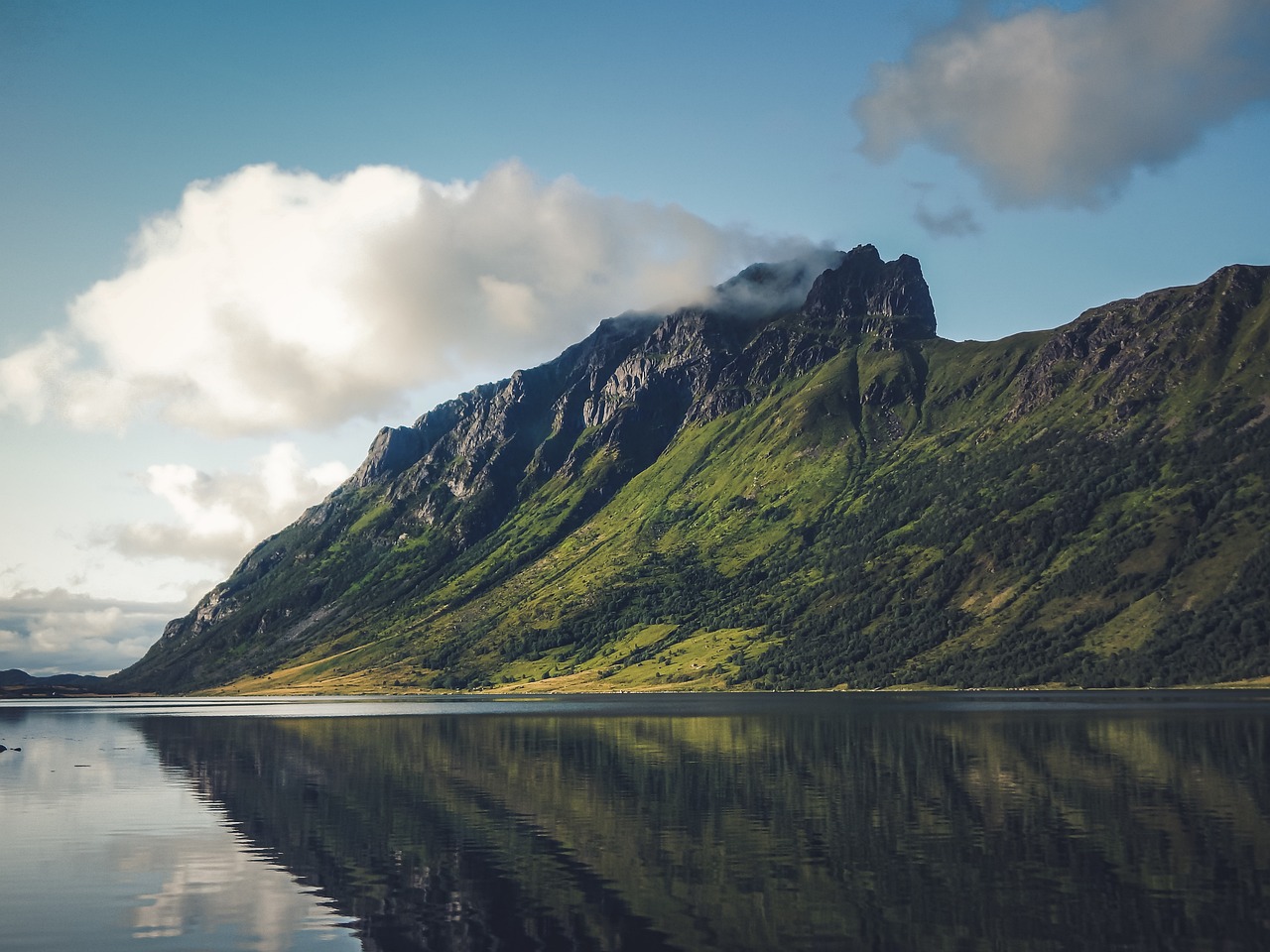
Practicing Leave No Trace Principles
Exploring sustainable practices for visitors to Norway's stunning fjords to help preserve the natural beauty and ecosystem for future generations.
Insights into the unique ecosystem of Norway's fjords and the importance of protecting it through responsible tourism practices.
Tips on selecting environmentally friendly transportation options such as electric cars, public transport, or cycling to reduce carbon footprint.
Guidelines on observing wildlife from a safe distance, avoiding feeding animals, and minimizing noise pollution to protect the natural habitat.
Ways to contribute to local conservation projects, such as volunteering, donating to organizations, or purchasing sustainably sourced products.
Strategies for minimizing plastic waste by carrying reusable water bottles, bags, and utensils while visiting the fjords.
When exploring the breathtaking fjords of Norway, it is crucial to adhere to the Leave No Trace principles. This means respecting the environment by properly disposing of waste, staying on designated trails, and leaving natural areas undisturbed. By following these principles, visitors can minimize their impact on the delicate ecosystem and ensure that the beauty of the fjords remains unspoiled for future generations.
Encouraging cultural sensitivity and respect for local traditions when interacting with residents and participating in cultural activities.
Promoting awareness about sustainable tourism practices among fellow travelers and encouraging others to follow eco-friendly guidelines in Norway's fjords.
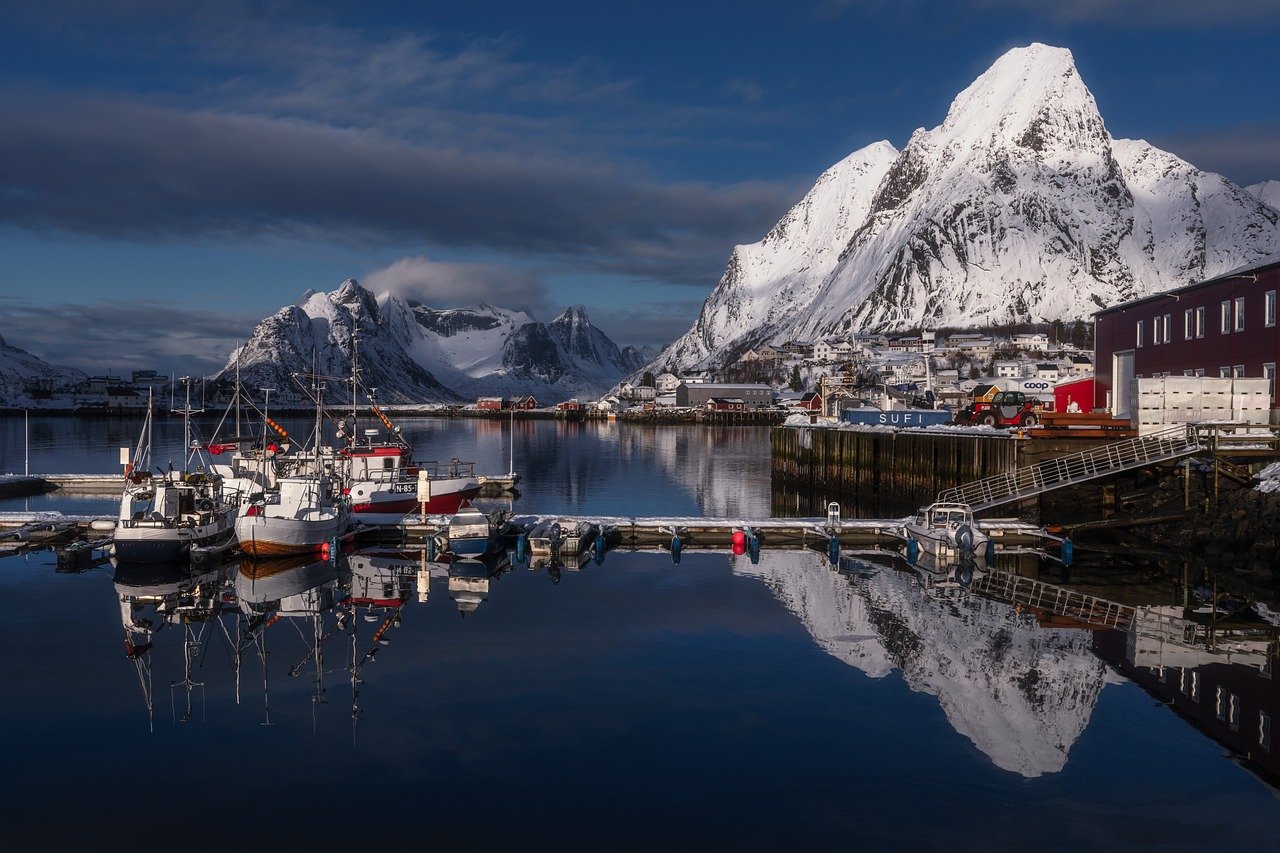
Engaging in Cultural Exchange Responsibly
When engaging in cultural exchange during your visit to Norway's fjords, it is essential to approach interactions with respect and sensitivity. Just as you would want visitors to your own community to honor your traditions, it is crucial to show the same courtesy to the locals you encounter. By immersing yourself in the culture with an open mind and a willingness to learn, you can create meaningful connections and gain a deeper appreciation for the region.
Responsible cultural exchange involves more than just observing customs; it also requires active participation while being mindful of cultural differences. Take the time to engage with local residents, listen to their stories, and ask questions respectfully. By showing genuine interest in their way of life, you not only enrich your own experience but also demonstrate your commitment to fostering positive relationships with the community.
Additionally, respecting local traditions and practices is key to ensuring that your presence has a positive impact. Whether participating in traditional ceremonies, trying local cuisine, or joining cultural activities, approach each experience with an open heart and a willingness to learn. Remember that you are a guest in their home, and your actions should reflect a deep appreciation for their heritage.
Furthermore, it is important to be aware of the potential impact of your behavior on the local culture. Avoid imposing your own beliefs or values on others and instead embrace the diversity that makes cultural exchange so enriching. By engaging respectfully and authentically, you not only honor the traditions of the community but also contribute to a more harmonious and inclusive travel experience for everyone involved.

Spreading Awareness and Education
Spreading awareness and education about sustainable tourism practices in Norway's fjords is crucial for ensuring the long-term preservation of this magnificent natural environment. By sharing knowledge and promoting eco-friendly guidelines, travelers can make a positive impact and inspire others to follow suit.
One effective way to spread awareness is through engaging storytelling. Sharing personal experiences of the beauty and fragility of the fjords can resonate with others and encourage them to adopt sustainable behaviors. By highlighting the interconnectedness of all living beings within the ecosystem, visitors can develop a deeper appreciation for the importance of conservation.
Moreover, leveraging social media platforms can amplify the message of sustainable tourism. Posting photos and stories that showcase responsible travel practices, such as picking up litter or supporting local initiatives, can inspire a wider audience to take action. Using hashtags and geotags can also help raise awareness and reach like-minded individuals.
Collaborating with local conservation organizations and tour operators can further enhance educational efforts. By participating in guided eco-tours or attending workshops on environmental conservation, visitors can gain valuable insights into the challenges facing the fjords and learn how they can contribute to preservation efforts. These immersive experiences can foster a sense of responsibility and stewardship towards the natural world.
Additionally, creating educational materials such as brochures or informational signage at popular tourist sites can provide visitors with practical tips on how to minimize their impact. Including facts about the local flora and fauna, as well as the history of conservation efforts in the region, can enrich the visitor experience and promote a deeper understanding of the ecosystem.
Ultimately, by actively engaging in spreading awareness and education about sustainable tourism practices, travelers can play a vital role in safeguarding Norway's fjords for future generations to enjoy. Each individual contribution, no matter how small, has the power to create a ripple effect of positive change and preserve this natural wonder for years to come.
Frequently Asked Questions
- How can I minimize my impact while visiting Norway's fjords?
To minimize your impact, consider choosing eco-friendly transportation options, respecting wildlife and marine life, reducing single-use plastics, practicing Leave No Trace principles, supporting local conservation efforts, engaging in cultural exchange responsibly, and spreading awareness about sustainable tourism practices.
- What are some eco-friendly transportation options to consider?
You can opt for electric cars, public transport, or cycling while visiting the fjords to reduce your carbon footprint and minimize environmental impact.
- How can I support local conservation efforts in Norway's fjords?
You can contribute by volunteering, donating to local organizations dedicated to conservation, or purchasing products that are sustainably sourced to support the conservation of the natural environment.
- Why is it important to reduce single-use plastics while visiting the fjords?
Reducing single-use plastics helps in minimizing plastic waste and protecting the marine ecosystem from pollution, ensuring the long-term health of the environment.
- What are Leave No Trace principles and why are they important?
Leave No Trace principles emphasize responsible outdoor ethics, including proper waste disposal, respecting designated trails and camping areas, and leaving nature as you found it to preserve the beauty and integrity of the natural surroundings.

